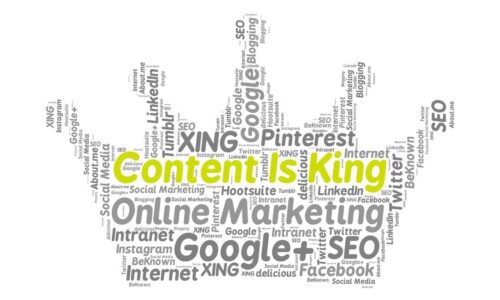
The Importance of Content Marketing Measurement
To truly understand the impact and effectiveness of your content marketing efforts, it is essential to embrace the practice of content marketing measurement. This process involves collecting and analyzing data to evaluate the performance of your content marketing initiatives. By measuring the right metrics and analyzing the data, you can gain valuable insights that will help you optimize your content strategy and drive better results.
Understanding Content Marketing Measurement
Content marketing measurement is the systematic approach of tracking and assessing the performance of your content marketing activities. It involves monitoring various metrics and key performance indicators (KPIs) to gauge the success of your content marketing efforts. This process allows you to assess the reach, engagement, and impact of your content on your target audience.
By understanding content marketing measurement, you can gain insights into how your content is performing across different channels and platforms. This knowledge helps you identify what is resonating with your audience, what needs improvement, and where you can make data-driven decisions to maximize the effectiveness of your content marketing strategy.
Benefits of Content Marketing Measurement
Measuring the performance of your content marketing efforts offers numerous benefits that can positively impact your overall marketing strategy. Here are some key advantages of content marketing measurement:
-
Insights for Optimization: Content marketing measurement provides valuable insights into what is working and what is not. By analyzing metrics such as website traffic, engagement, social media reach, lead generation, and sales, you can identify areas of improvement and optimize your content strategy accordingly.
-
Data-Driven Decision Making: By relying on data and metrics, you can make informed decisions about your content marketing strategy. Content marketing measurement helps you identify trends, patterns, and opportunities, allowing you to allocate resources effectively and make strategic adjustments to your approach.
-
Demonstrating ROI: Measuring the impact of your content marketing efforts enables you to demonstrate the return on investment (ROI) to key stakeholders. By showcasing the value and effectiveness of your content, you can build trust, secure resources, and justify the investment in content marketing initiatives.
-
Continuous Improvement: Content marketing measurement provides a feedback loop that allows for continuous improvement. By regularly monitoring and analyzing metrics, you can refine your content strategy, experiment with different approaches, and make data-backed decisions to drive better results over time.
Embracing content marketing measurement is crucial for any business or marketer striving to achieve their goals through content marketing. By understanding the concept and reaping the benefits, you can unlock the true power of content marketing and drive meaningful results for your organization.
Key Metrics for Content Marketing Measurement
To effectively measure the impact of your content marketing efforts, it’s important to track and analyze key metrics. These metrics provide valuable insights into the performance of your content and help you make data-driven decisions. In this section, we will explore five key metrics for content marketing measurement: website traffic metrics, engagement metrics, social media metrics, lead generation metrics, and sales metrics.
Website Traffic Metrics
Website traffic metrics provide a comprehensive view of the number of visitors to your website and how they interact with your content. Some important website traffic metrics to monitor include:
- Organic Search Traffic: This metric measures the number of people who found your website through search engines. It reflects the effectiveness of your SEO efforts and the visibility of your content in search results. Producing valuable content and improving domain authority can lead to higher organic search traffic over time.
- Referral Traffic: Referral traffic measures the number of people who clicked on links to your website from external sources, such as guest posts or off-site content. Analyzing the breakdown of referral traffic helps identify which sources are driving meaningful users to your site.
- Social Traffic: Social traffic evaluates the effectiveness of in-platform content and syndicated content at attracting visitors to your website. Low overall traffic from social media may indicate a need to increase posting frequency or create more attention-grabbing headlines.
- New Visitors: Tracking the number of new visitors provides insights into the effectiveness of your content in attracting and retaining interested users to your site. Monitoring the rise or decline in new visitor count helps assess the impact of social and referral traffic efforts.
Engagement Metrics
Engagement metrics measure how users interact with your content and indicate the level of interest and involvement. These metrics help assess the quality and relevance of your content. Some essential engagement metrics include:
- Bounce Rate: Bounce rate measures the percentage of visitors who leave your website after viewing only one page. A high bounce rate may indicate that your content is not meeting user expectations or lacks relevance.
- Time on Page: This metric measures the average amount of time users spend on a specific page. It indicates the level of engagement and interest in your content. Longer average time on page suggests that users are finding value in your content.
- Page Views: Page views quantify the number of times a specific page on your website is viewed. It helps identify popular content and areas of interest for your audience.
- Click-through Rate (CTR): CTR measures the percentage of users who click on a specific link or call-to-action. It provides insights into the effectiveness of your content in driving user actions.
- Social Shares: Social shares count the number of times your content is shared on social media platforms. It reflects the level of engagement and interest from your audience.
Social Media Metrics
Social media metrics focus on measuring the performance and impact of your content across social media platforms. These metrics help assess brand visibility, audience engagement, and the effectiveness of your social media marketing efforts. Some important social media metrics include:
- Followers and Fans: This metric measures the number of people who follow or like your social media accounts. It reflects the size of your social media audience and the potential reach of your content.
- Reach and Impressions: Reach represents the number of unique users who see your social media content, while impressions indicate the total number of times your content is displayed. Tracking reach and impressions helps evaluate the visibility and exposure of your content.
- Engagement Rate: Engagement rate measures the level of interaction and involvement with your social media content. It includes actions such as likes, comments, and shares. A higher engagement rate indicates that your content resonates with your audience.
- Click-through Rate (CTR): CTR on social media measures the percentage of users who click on a link or call-to-action in your social media posts. It provides insights into the effectiveness of your social media content in driving traffic to your website.
Lead Generation Metrics
Lead generation metrics focus on measuring the effectiveness of your content in generating leads and capturing prospective customers. These metrics help evaluate the impact of your content on the sales funnel. Some key lead generation metrics include:
- Conversion Rate: Conversion rate measures the percentage of visitors who take a desired action, such as filling out a form or subscribing to a newsletter. It reflects the effectiveness of your content in converting visitors into leads.
- Cost per Lead: Cost per lead quantifies the amount spent on content marketing efforts to acquire a single lead. Tracking this metric helps assess the efficiency and cost-effectiveness of lead generation activities.
- Landing Page Performance: Landing page metrics, such as bounce rate, time on page, and form completions, provide insights into the effectiveness of your landing pages in capturing leads.
Sales Metrics
Sales metrics focus on measuring the impact of your content marketing efforts on driving sales and revenue. These metrics help evaluate the return on investment (ROI) of your content marketing campaigns. Some important sales metrics to monitor include:
- Conversion Rate: Conversion rate in sales measures the percentage of leads who complete a desired action, such as making a purchase or requesting a consultation. It reflects the effectiveness of your content in driving sales.
- Customer Acquisition Cost (CAC): CAC quantifies the cost of acquiring a new customer. It helps assess the cost-effectiveness of your content marketing efforts in acquiring and retaining customers.
- Revenue per Customer: Revenue per customer measures the average amount of revenue generated from each customer. It helps evaluate the profitability of your content marketing initiatives.
By monitoring these key metrics, you can gain valuable insights into the performance of your content marketing efforts. These metrics enable you to make informed decisions, optimize your content strategy, and achieve your content marketing goals.
Setting SMART Goals for Content Marketing Measurement
To effectively measure the success of your content marketing efforts, it is crucial to set clear and specific goals. By defining SMART goals and aligning them with your business objectives, you can track your progress, evaluate performance, and make data-driven decisions.
Defining SMART Goals
SMART is an acronym that stands for Specific, Measurable, Achievable, Relevant, and Time-bound. When setting goals for content marketing measurement, it’s important to ensure they meet these criteria. Let’s break down each element of SMART goals:
-
Specific: Your goals should be well-defined and focused. Instead of a general objective like “increase website traffic,” a specific goal could be “increase website traffic by 20% in the next six months by publishing two blog posts per week and promoting them on social media.” This specificity helps to provide clarity and direction for your content marketing efforts.
-
Measurable: It’s important to establish metrics and key performance indicators (KPIs) that allow you to track progress and measure success. For example, you can measure website traffic using tools like Google Analytics and set a goal to achieve a certain number of monthly visitors or page views. Measurable goals provide tangible data for evaluation.
-
Achievable: Goals should be challenging yet attainable. Consider your available resources, budget, and capabilities when setting goals. Setting unrealistic or overly ambitious goals may lead to frustration and hinder progress. By setting achievable goals, you can maintain motivation and see tangible progress over time.
-
Relevant: Align your goals with your overall business objectives. Your content marketing goals should reflect outcomes that matter most to your brand, such as awareness, engagement, leads, sales, retention, or loyalty. Ensure that your goals support your broader marketing and business strategies.
-
Time-bound: Establish a timeframe for achieving your goals. Setting deadlines helps create a sense of urgency and provides a timeline for evaluating progress. For example, you can set a goal to increase leads by 15% within three months. This time-bound aspect enables you to measure success within a specific period and make necessary adjustments if needed.
Aligning Goals with Business Objectives
Your content marketing goals should align with your overall business objectives. By doing so, you ensure that your content efforts contribute to the growth and success of your organization. Start by identifying the outcomes and objectives you want to achieve through your content marketing initiatives.
For example, if your business objective is to increase brand awareness, your content marketing goal might be to increase social media engagement and reach. If your objective is to drive sales, your content marketing goal could be to generate a specific number of qualified leads through content-related channels.
By aligning your content marketing goals with your business objectives, you create a cohesive strategy that supports your overall growth. This alignment also allows you to communicate the value and impact of your content marketing efforts to stakeholders and decision-makers within your organization.
Remember, setting SMART goals and aligning them with your business objectives is only the first step in effective content marketing measurement. To track and evaluate your progress, you’ll need to utilize tools and methods such as Google Analytics, social media analytics platforms, and marketing automation platforms. By combining goal-setting with data-driven measurement, you can optimize your content marketing strategy and drive meaningful results.
Tools and Methods for Content Marketing Measurement
To effectively measure the success of your content marketing efforts, it’s crucial to utilize the right tools and methods. Here are three essential tools for content marketing measurement:
Google Analytics
Google Analytics is a widely used tool for content marketing measurement. It provides comprehensive data on website traffic, user behavior, conversions, and more. By implementing tracking codes on your website, you can gather valuable insights into the performance of your content and how it engages your audience. With Google Analytics, you can:
- Track the number of visitors to your website and identify the sources of traffic.
- Analyze user behavior, such as time spent on pages, bounce rates, and click-through rates.
- Measure conversions, such as form submissions, newsletter sign-ups, or purchases.
- Gain insights into the demographics and interests of your website visitors.
By leveraging the power of Google Analytics, you can make data-driven decisions to optimize your content marketing strategy and drive better results. For more information on using Google Analytics effectively, check out our article on content marketing analytics.
Social Media Analytics Platforms
In addition to website analytics, social media analytics platforms play a crucial role in measuring the effectiveness of your content marketing efforts on social media platforms. Platforms like Sprout Social and Hootsuite offer comprehensive data on the performance of your content across various social media channels. With social media analytics platforms, you can:
- Track engagement metrics, such as likes, shares, comments, and click-through rates.
- Measure reach and impressions to understand the visibility of your content.
- Monitor audience growth and demographics to identify your target audience.
- Analyze the effectiveness of your social media campaigns and content strategy.
By leveraging social media analytics platforms, you can gain valuable insights into how your content resonates with your audience on different social media platforms. This information can help you refine your content marketing approach and optimize your social media presence. To learn more about content marketing on social media, read our article on content marketing social media.
Marketing Automation Platforms
Marketing automation platforms, such as HubSpot and Marketo, offer robust tools for tracking and measuring the effectiveness of your content marketing campaigns. These platforms provide features for lead generation, lead nurturing, and tracking customer interactions with your content. With marketing automation platforms, you can:
- Capture and track leads generated through your content marketing efforts.
- Nurture leads with targeted content and measure their engagement.
- Analyze customer interactions with your content across multiple channels.
- Attribute conversions and sales to specific content pieces or campaigns.
By leveraging marketing automation platforms, you can streamline your content marketing workflows, automate repetitive tasks, and gain insights into the ROI of your content marketing efforts. This data-driven approach enables you to optimize your content strategy and maximize your marketing impact. To learn more about content marketing optimization, refer to our article on content marketing optimization.
By utilizing tools like Google Analytics, social media analytics platforms, and marketing automation platforms, you can effectively measure the impact of your content marketing efforts. These tools provide valuable data and insights that can guide your content strategy, help you make informed decisions, and drive better results.
Measuring ROI in Content Marketing
As a content marketing expert, it is essential to measure the return on investment (ROI) of your content marketing efforts. Understanding the impact and effectiveness of your content allows you to make data-driven decisions and optimize your strategies for better results. Let’s explore how you can measure ROI in content marketing.
Understanding ROI in Content Marketing
ROI in content marketing refers to the value you gain from your content initiatives compared to the costs incurred. It quantifies the success of your content marketing efforts and helps you assess whether your investments are generating the desired outcomes. Measuring ROI allows you to demonstrate the impact of your content on various business objectives, such as brand awareness, lead generation, and sales.
Steps to Calculate Content Marketing ROI
Calculating ROI for content marketing involves a multi-step process. Here are the steps to help you calculate and evaluate the ROI of your content marketing efforts:
-
Set Goals: Clearly define your goals and key performance indicators (KPIs) that align with your overall business objectives. These goals should be specific, measurable, achievable, relevant, and time-bound (SMART). For example, your goal could be to increase website traffic by 20% and generate 50 qualified leads per month.
-
Track Key Metrics: Identify and track the key metrics that align with your goals. These metrics can include website traffic, engagement metrics (such as time on page and bounce rate), social media metrics (such as reach and engagement), lead generation metrics (such as form submissions and email sign-ups), and sales metrics (such as conversion rate and revenue generated).
-
Determine the Value of Conversions: Assign a value to each conversion or action generated by your content marketing efforts. For example, if a lead generated through your content marketing campaign results in a $500 sale, you can assign a value of $500 to that conversion.
-
Calculate Costs: Calculate all the costs associated with your content marketing efforts, including content creation, distribution, promotion, and any other related expenses. Keep track of both internal and external costs.
-
Analyze Engagement Metrics: Analyze your engagement metrics to gain insights into how your audience is interacting with your content. This data can help you identify areas for improvement and optimization.
-
Attribute Revenue: Attribute revenue generated by your content marketing efforts to specific conversions or actions. Use analytics tools and attribution models to accurately attribute revenue to content touchpoints along the customer journey.
-
Evaluate ROI: Finally, calculate your ROI using the following formula: ROI = (Revenue – Cost) / Cost x 100%. This formula helps you determine the percentage return on your content marketing investment.
Measuring ROI for content marketing can be challenging due to the involvement of multiple channels, metrics, and goals. However, by following these steps and utilizing the right measurement tools and methods such as Google Analytics, social media analytics platforms, and marketing automation platforms, you can collect, analyze, and report data effectively.
Remember that measuring ROI is an ongoing process. Continuously evaluate and refine your content marketing strategies based on the insights gained from ROI measurement. By doing so, you can optimize your content marketing efforts and drive better results aligned with your business objectives.
Best Practices for Content Marketing Measurement
To effectively measure the impact and success of your content marketing efforts, it’s essential to follow best practices. By implementing these practices, you can gain valuable insights into your strategy and make data-driven decisions to optimize your content marketing campaigns.
Clear and Realistic Goal Setting
Setting clear and realistic goals is the foundation of effective content marketing measurement. Before diving into content creation, it’s crucial to define specific objectives that align with your overall business goals. These goals could include building brand awareness, engaging the audience, generating leads, or driving conversions (LinkedIn). By establishing measurable goals, you can track your progress and determine the success of your content marketing efforts.
Audience Identification and Content Purpose
Before creating content, it’s important to identify your target audience and understand their needs, preferences, and content consumption habits. This knowledge allows you to tailor your content to their interests and pain points, ensuring relevance and engagement. Additionally, clearly defining the purpose of your content is crucial. Understand the problem or challenge your content will solve for the audience, the value proposition it offers, and how it supports your brand’s mission and vision (LinkedIn). By aligning your content with your audience’s needs and your brand’s objectives, you can create impactful content that resonates with your target audience.
Choosing the Right Attribution Model
Measuring and attributing the impact of your content marketing efforts can be complex. Choosing the right attribution model is crucial in understanding how your content contributes to the final outcome and how to allocate resources accordingly. Different attribution models, such as first-touch, last-touch, linear, time-decay, and position-based, allocate credit to different touchpoints along the customer journey. Assessing the strengths and weaknesses of each model and selecting the one that aligns with your objectives will provide valuable insights into the effectiveness of your content marketing efforts (LinkedIn).
Utilizing Measurement Tools and Methods
To effectively measure the performance of your content marketing, it’s essential to use the right tools and methods. Google Analytics is a powerful tool that provides in-depth insights into website traffic, engagement metrics, and conversion tracking. By implementing Google Tag Manager, you can easily manage and deploy tracking codes on your website. Social media analytics platforms allow you to track the performance of your content across various social media channels. Marketing automation platforms provide comprehensive data on lead generation, nurturing, and conversion. By leveraging these tools and methods, you can collect, analyze, and report data related to your content marketing performance (LinkedIn).
By following these best practices, you can ensure that your content marketing efforts are effectively measured and optimized for success. Clear and realistic goal setting, audience identification, choosing the right attribution model, and utilizing measurement tools and methods are essential ingredients for a successful content marketing strategy. Continuously monitoring and analyzing your performance metrics will enable you to make data-driven decisions, refine your content strategy, and achieve your marketing objectives.
- Boost Your Business: Expert Google My Business Ranking Tipsby Freelancertamal●March 1, 2024
- Strategies to Improve Your Website Visibilityby Freelancertamal●February 18, 2024
- Unlocking Success: The Art of Freelance Project Managementby Freelancertamal●January 4, 2024
- Mastering Email Marketing in Rangpur: Secrets to Digital Triumphby Freelancertamal●January 4, 2024










